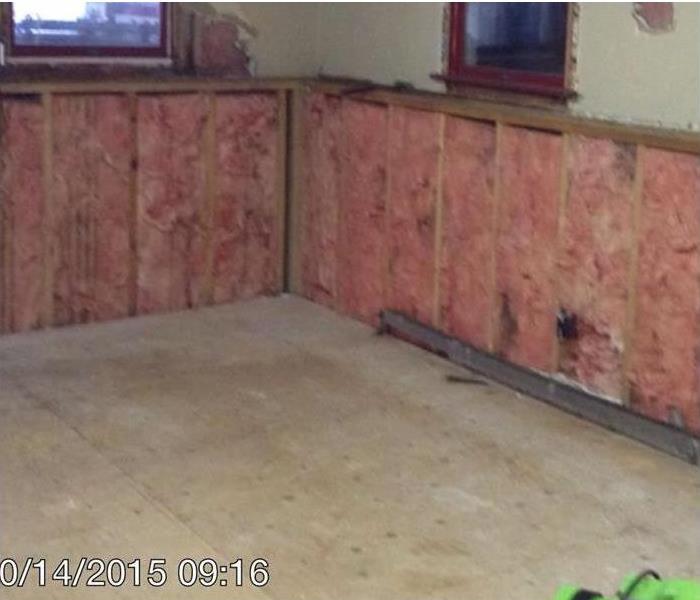We Act Fast To Limit More Damage To Your Bridgewater Home After A Flood
9/25/2019 (Permalink)
 Water came half way up the cellar stairs in this home after a flood. We were able to start restoration right away.
Water came half way up the cellar stairs in this home after a flood. We were able to start restoration right away.
How Controlled Demolition Helps Mitigate Flood Damage in Bridgewater
When you are already panicking as floodwaters rise in your Bridgewater home, hearing from a mitigation expert that building material tear-out is recommended can heighten your anxiety. Understanding the reasons for the planned demolition of carefully selected and usually easily replaced structures helps you put additional disruption into perspective. Our Institute of Inspection, Cleaning and Restoration Certification (IICRC)-trained managers and technicians use this strategy judiciously, following industry best practices.
Flood Water Is Hazardous
When managing flood damage in your Bridgewater residence, we presume that the fluids in your home harbor hazards such as bacteria, viruses, and other microbes. Floodwaters can contain sewage from street drain overflows. They also pick up chemicals, animal and insect waste, and other pollutants as they move across roadways, industrial sites, agricultural land, and yards. Black or Category 3 water can expose inhabitants to health risks if not removed thoroughly, dried out completely, and disinfected with EPA-registered products.
Scoping the Affected Area for Hidden Flood Water
It is an inadequate professional response to extract only visible fluids from the flooded area. Water migrates through porous materials like drywall into building cavities and seeps and trickles into crevices and cracks along floor planks and baseboards, soaking subfloors. Water trapped between wallpaper and paint or above ceiling tiles creates bulges and empty cells in cinder block can hold substantial quantities of water. We use infrared imaging cameras to show temperature fluctuations that can indicate caches of water. Moisture meters also help us follow the path of absorbed fluids in structural components.
Required Release of Contaminated Water
If the flood damage that traveled into, behind, beneath, and above structural components remains in place, the microbes can multiply, damaging organic materials and endangering the health of your family. The SERVPRO crew uses strategies to release the water for collection and disposal. Flood cuts slice through and remove drywall several inches above the waterline. We then can access the space behind to pump or extract water. Weep holes punched through bulging surfaces allow water to drain out. Drilled holes in mortar joints give water trapped behind bricks, blocks, or stucco a pathway out.
Access for Disinfection and Structural Drying
All the above controlled demolition techniques also give SERVPRO access to enhance warm airflow during structural drying. Our EPA-registered disinfectants can be applied via spray or other methods to treat all surfaces soaked with microbial rich fluid. The disinfection kills the bacteria, viruses, and fungi that might otherwise grow unchecked.
SERVPRO of The Bridgewaters chooses controlled demolition to reach all areas contaminated with Category 3 flood water. We help arrange for rebuilding after we ensure inhibition of microbial growth. Call us at (508) 697-5439 to schedule a professional evaluation and flood damage abatement plan.
See more about Bridgewater.



 24/7 Emergency Service
24/7 Emergency Service